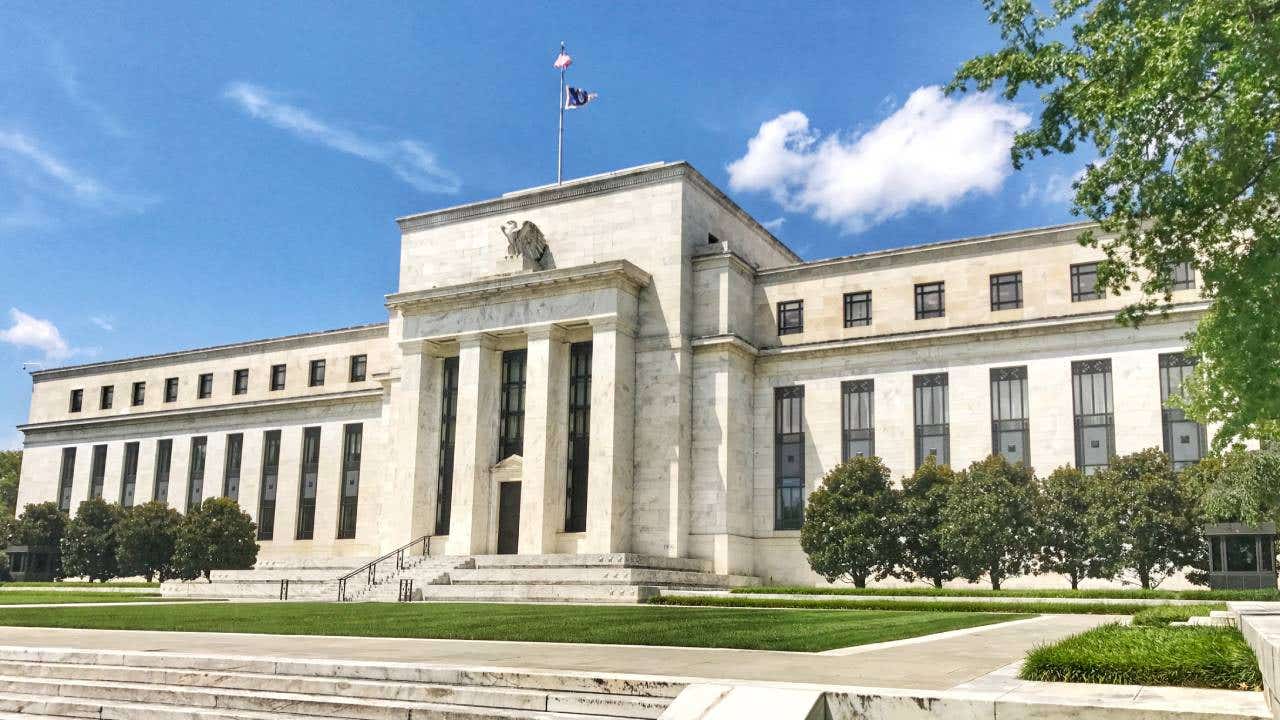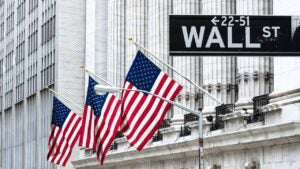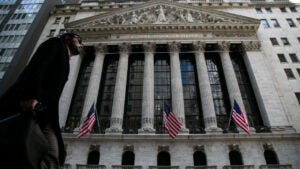Survey: Market pros see 10-year Treasury yield under 4% a year from now

Investment analysts surveyed by Bankrate expect Treasury yields to edge lower over the next 12 months with an interest rate cut anticipated at the Federal Reserve’s September meeting. Bankrate’s Second-Quarter Market Mavens survey found that market experts see the 10-year Treasury yield falling to 3.96 percent a year from now, down from 4.34 percent at the end of the survey period on June 28.
In fact, most of the survey’s respondents see rates lower a year from now, with forecasts ranging from 3.40 percent to 4.50 percent.
“Higher for longer may well be a reality for interest rates and yields over the next six to 12 months, depending on the durability of the economic expansion,” says Mark Hamrick, Bankrate’s senior economic analyst.
“What’s not to like about a world where savers and investors are both rewarded? That’s a mix that we hadn’t seen for years before outsized inflation forced the Fed to begin tightening, lifting rates and yields,” adds Hamrick.
Forecasts and analysis
This article is one in a series discussing the results of Bankrate’s Second-Quarter 2024 Market Mavens Survey:
- Survey: Stocks to gain 4% over the next year
- Survey: Market pros see 10-year Treasury yield under 4% a year from now
- Survey: Best ways to play falling interest rates, elections and AI, according to investing pros
10-year yield expected to be lower over the next 12 months, analysts say
Over the past two decades, the 10-year Treasury yield has stayed mostly below 5 percent. It hit a record low of around 0.5 percent in August 2020 during the Covid-19 pandemic when the Federal Reserve lowered interest rates to help bolster the economy. As the economy bounced back, the yield started to go up. Throughout 2022, the Fed raised rates more aggressively to fight inflation, causing a steady increase in yields.
Investment professionals surveyed by Bankrate expect the 10-year yield to be 3.96 percent at the end of June 2025, down from the 4.18 percent level they expected it to reach at the end of March 2025, as indicated in the previous survey.
The survey’s estimates have generally tracked the overall path of interest rates, with forecasts ranging from 2.4 percent in the first quarter 2022 survey to 4.18 percent in the first quarter 2024 survey.
Analysts see more opportunities in stocks and bonds
Fixed-income investments are offering some of their best returns in years, thanks to interest rate increases of 2022 and 2023. But investors should be aware of rate cuts on the horizon, and the impact they may have on fixed-income assets moving forward.
Nine out of 10 experts in the Bankrate survey expect the Fed to cut interest rates during its September 17-18 meeting. A cut could impact how much cash investors keep on hand.
“If (the Fed is cutting) because inflation has moved toward the 2 percent target…sidelined cash will get put to work as money market rates come down,” says Patrick O’Hare, chief market analyst at Briefing.com.
However, if the rate cut signals a struggling economy, O’Hare cautions that stocks might suffer, making Treasuries a more attractive play.
“If rates are coming down because growth is faltering, or we are in a recession, it won’t be good for stocks in general,” says O’Hare. “In this instance, there would be opportunity in Treasuries, and cash would be held dear as investors look simply to preserve capital.”
The potential for lower interest rates may mean now is the time to buy longer-term bonds to secure and “lock in” higher yields.
“We would look at yields on the long end at 4.75 percent and above as an opportunity to extend duration ahead of Fed rate cuts,” says Sameer Samana, senior global market strategist at Wells Fargo Investment Institute, pointing to longer-dated bonds.
At the same time, lower rates may entice some investors to invest in stocks rather than bonds.
“Lower rates and solid growth usually create a compelling opportunity for those holding cash to put some of it to work in equities,” says Dec Mullarkey, managing director of investment strategy and asset allocation at SLC Management.
Meanwhile, experts such as Sam Stovall, chief investment strategist at CFRA Research, warn that stock price growth might slow after the first rate cut.
“Stock prices tend to rise at a slower rate after the Fed has cut rates than in anticipation of the first rate cut,” says Stovall. “Separately, cash and bond holders will likely maintain their fixed-income exposure, rather than adding to their equity positions.”
Editorial Disclaimer: All investors are advised to conduct their own independent research into investment strategies before making an investment decision. In addition, investors are advised that past investment product performance is no guarantee of future price appreciation.





